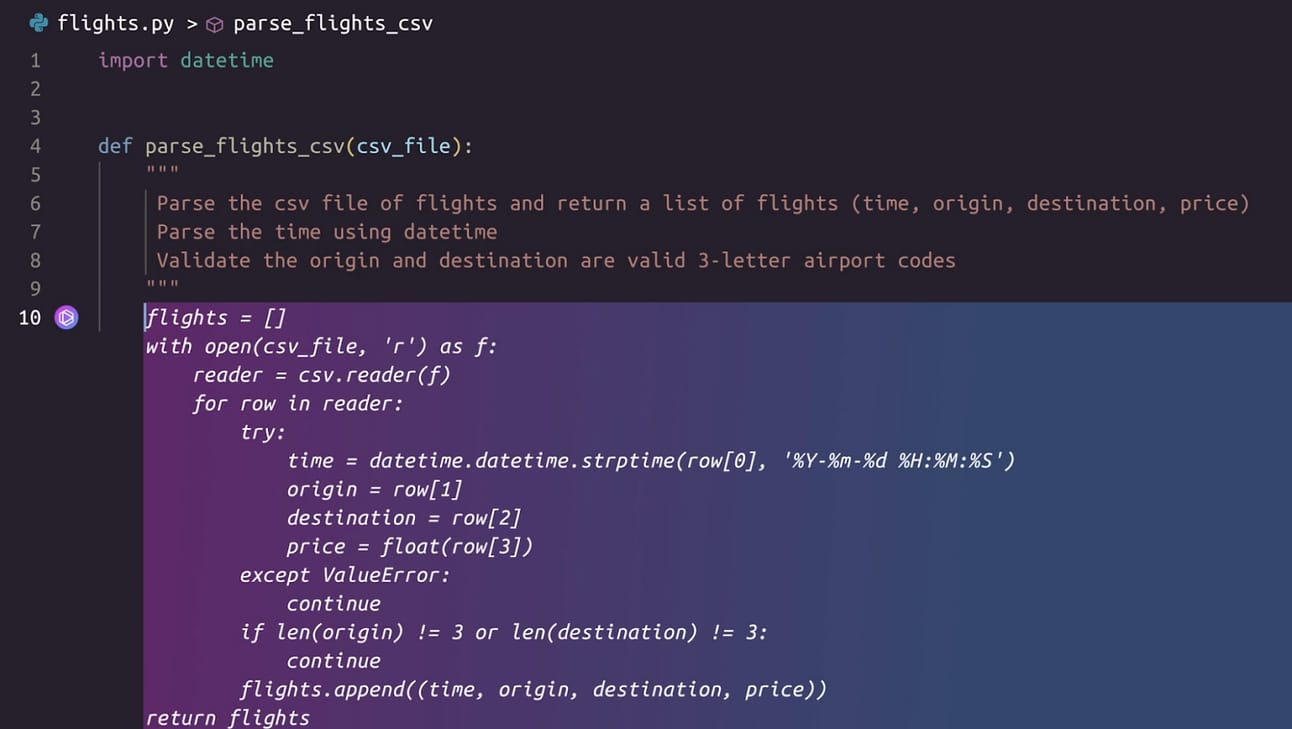- The AI Puppy
- Posts
- Code without the learning curve 💻
Code without the learning curve 💻
Whether you’re a coding pro or a total tech novice, here are AI tools that do the coding heavy lifting for you 💪
Hey AI Puppies,
Of the many things there is to love about AI (and of the many misconceptions there are about it, too), we’re especially obsessed with how user-friendly AI can be, regardless of your skill with other technology.
Don’t know how to build a website? Have no idea how to switch HDMIs on your TV? Can’t code to save your life?
AI doesn’t care.
If you know how to do a Google search, you can use AI.

you using AI better than Outlook
We’re kicking off this newsletter with a motivational speech because this week, we’re exploring AI tactics for something a bit more advanced: Code.
Never seen a line of code in your life? Don’t panic – you’re about to meet your co-pilot.
Already know your way around a line of code and back? Keep reading – you’re about to lighten the workload.
Let’s get into:
✅ Generating code from scratch (including beginner-friendly html)
✅ Speeding up the code-writing process
✅ Replacing coding bugs with actionable solutions
Writing Code With AI
Let’s start with some basic coding definitions:
📏A code is a set of guidelines that create a software application
✍️Code is written in a specific programming language such as C++, Java, Python, and SQL
💻Computers then read the written coding lines to execute the directions
📖So, in extremely basic terms, writing code is the art of writing a very, very specific instruction manual in a language computers can understand
Like every other task that’s compatible with AI, coding has a lot of repetition and a lot of fundamental rules. They’re so compatible, coding is considered one of the fields most likely to be transformed by AI.
Ready to get in on the fun and write your first line of code? Let’s start with some low-hanging fruit: HTML, the type of code that’s used to build websites.
👉As usual, the first step is to head to your ChatGPT account. We’re keeping things simple today, so stick to your normal chat area for now.
👉Then, tell ChatGPT what you coding language you want to use (in this case, HTML5, the latest form of HTML), and what you want it to do.
We entered….
“Write me an html5 page about how to train a puppy”
And got…
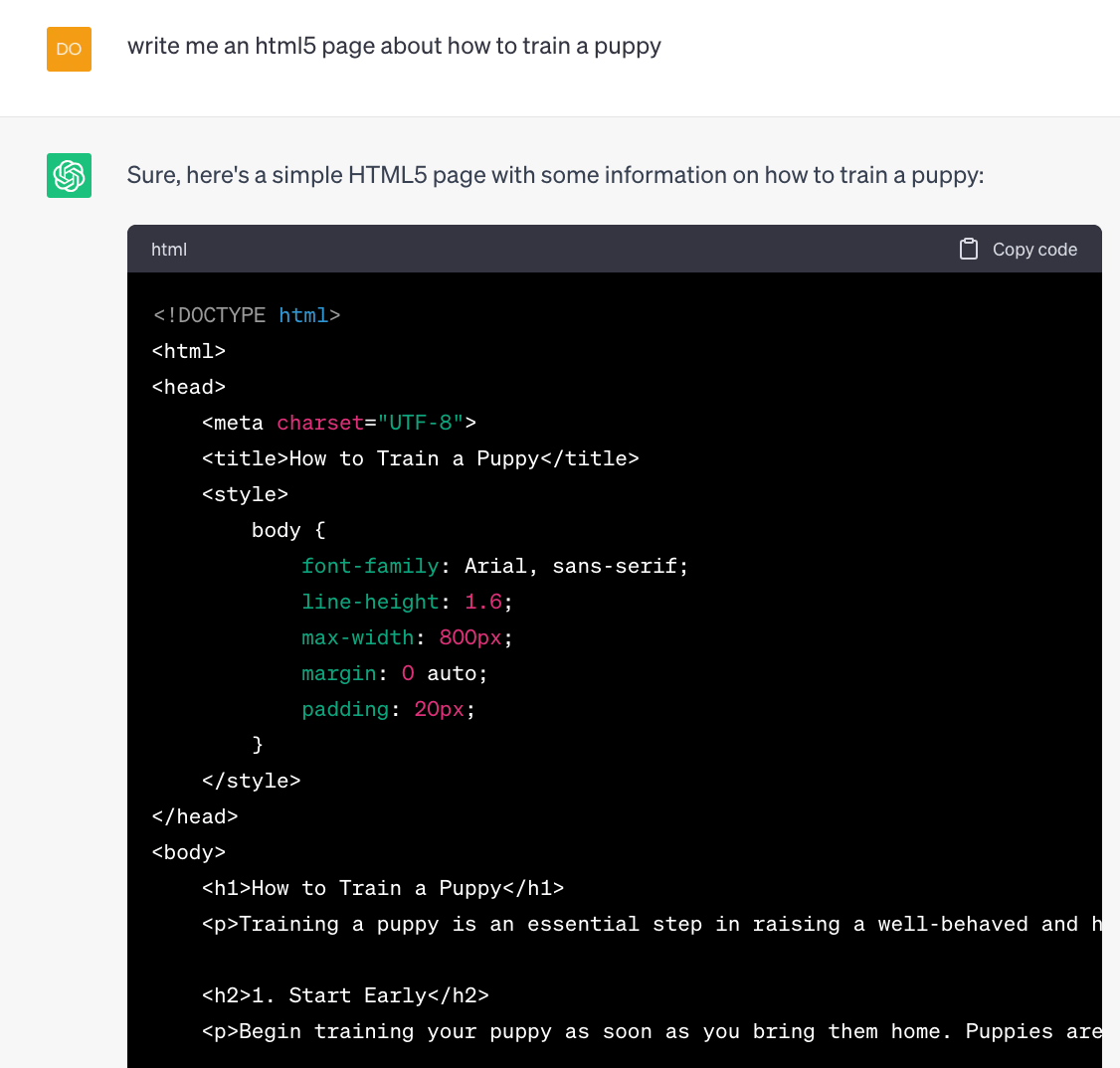
You can also ask it for specific help! For example, we plugged in…
“write me an html5 prompt for centering text in the middle of the page and putting in a bold font”
And got…
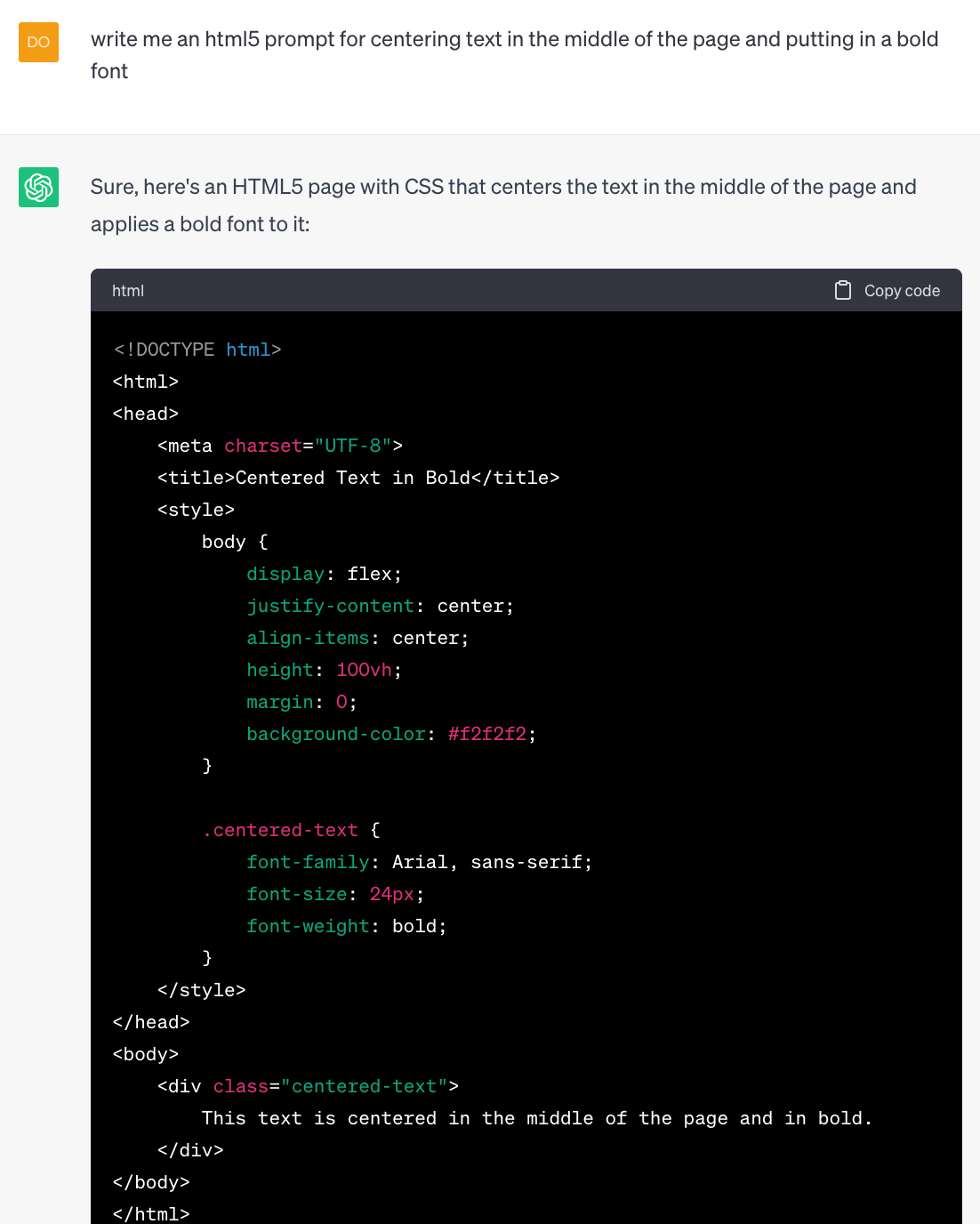
We say this every week, but yes, Puppies, it really is that simple 🐶
When you eventually reach higher levels of coding with languages like Python, you can follow the same steps.
For example, we entered….
“Can you write a simple Python code welcoming a user to a page and asking them to share their email”
And got…
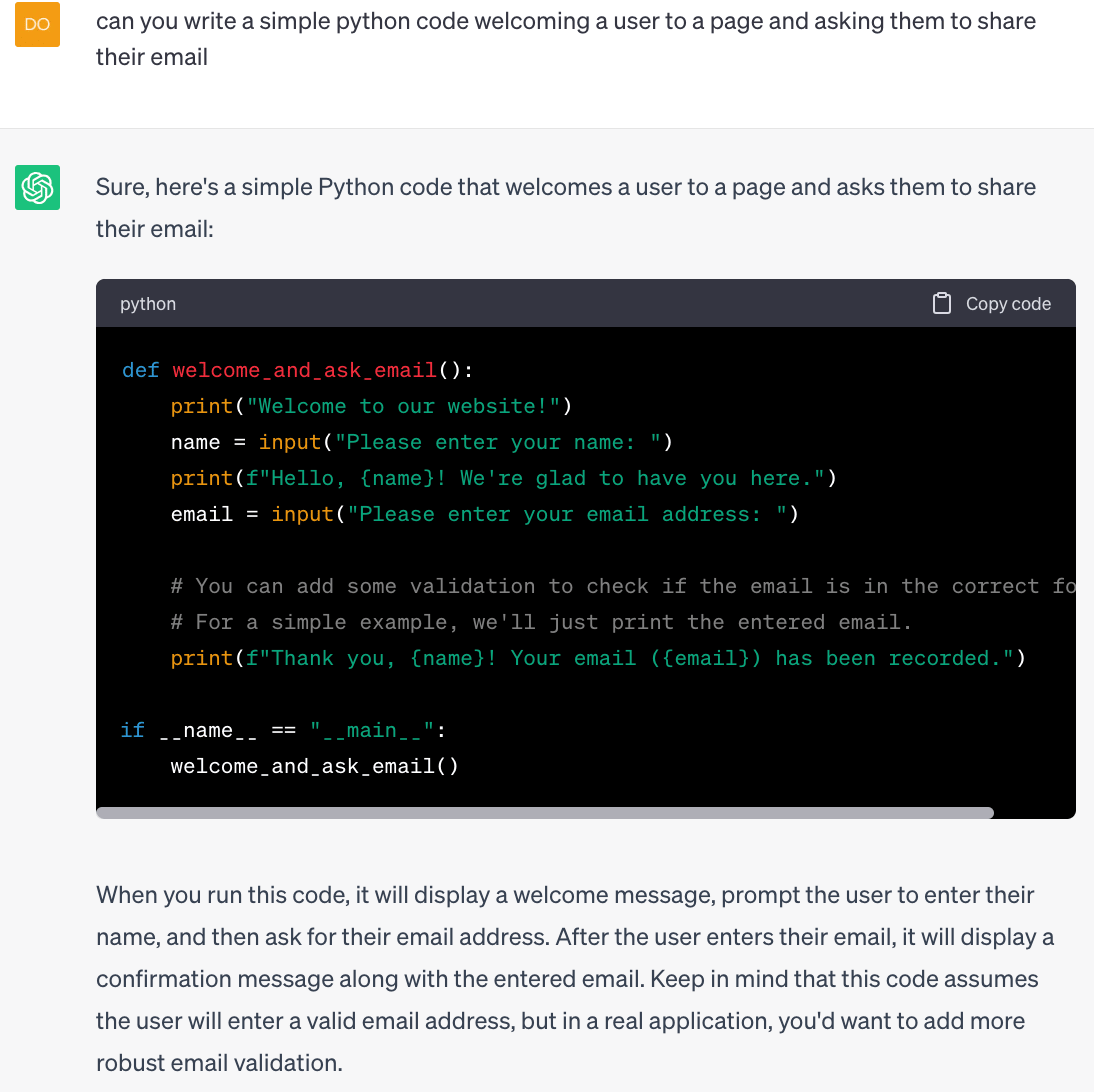
We say this every week, but yes, Puppies, it really is that simple 🐶
Now, before we get carried away, we do want to caveat that in order to write dynamic, powerful, and compelling code, you do need to pair AI’s writing ability with a solid understanding of what full-fledged coding really looks like.
Beginners who are determined to get to that level (and we fully believe you can) should experiment with OpenAI Codex alongside their studying.
OpenAI Codex still turns natural language into code, but it can do a lot more than ChatGPT. So while anyone can use it, code knowledge or not, you’ll still need to know what to do with the scripts once you have them!
Here’s an example, courtesy of Harish Garg:
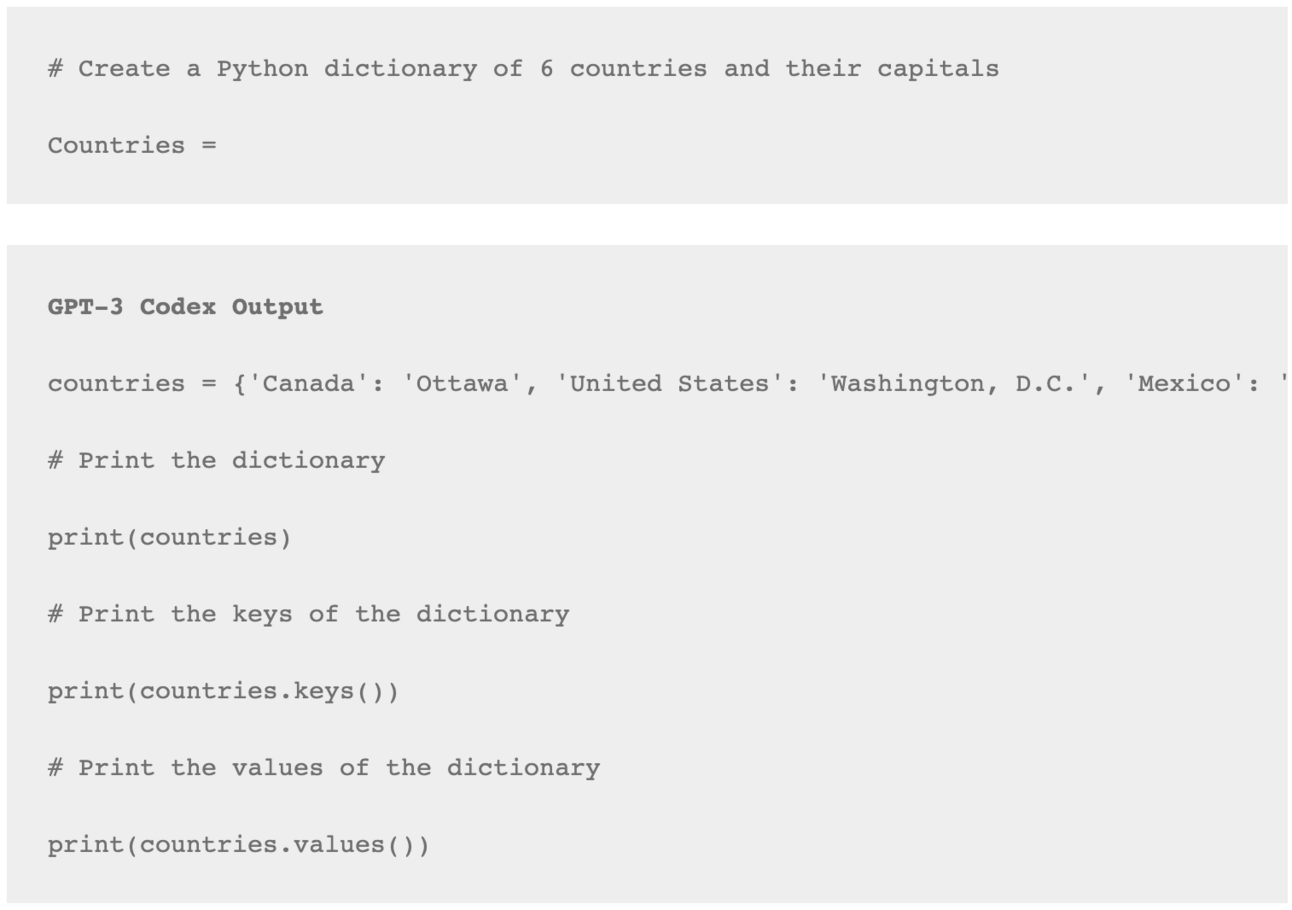
OpenAI Codex does require an application to get access to the beta, so if you want a less-exclusive alternative, take a look at Polycoder. It was developed by researchers at Carnegie Mellon University and claims to write C code faster than Codex 👀
Happy learning, Puppies!
Streamlining Coding
Feeling confident with your coding? What if we told you you could still get the satisfaction of writing code for a fraction of the time investment ⌛
Already, AI tools have been developed that sit alongside you as you write code to provide predictive suggestions based on the lines you’ve written so far.
Think of it as a co-author – you write your lines as usual, but have someone else do the repetitive typing for you.
Many of these types of tools are already in use across the software industry, but let’s review two that are gaining traction:
👉 Codota is a website that generates code completion suggestions based on the user’s unique coding habits. It also features a search engine to help you find snippets and examples:
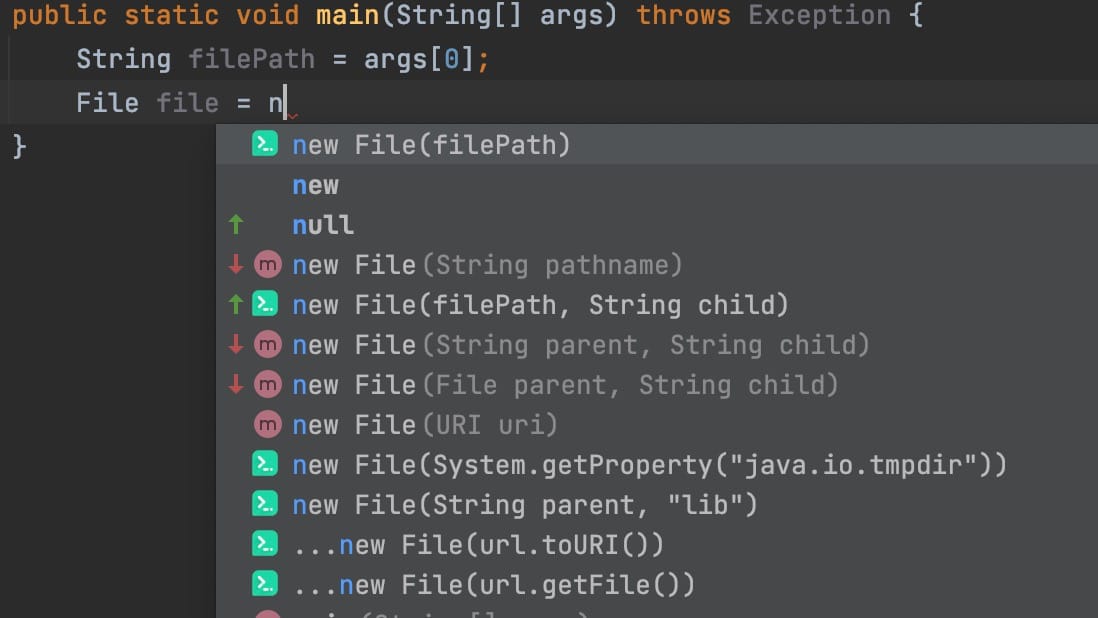
Codota example, courtesy of Bug Days]
👉Tabnine is a very similar solution, but has a bit more of a teamwork focus. It gives completion suggestions based on both an individual’s and an organization’s preferences:
Time is a precious resource – code completion AI is here to maximize yours!
Fixing Bugs
Say you love writing end-to-end code manually, but can’t solve a lingering issue.
Meet Snyk powered by DeepCode, a website that uses AI and machine learning to review and analyze written code and suggest improvements.
It claims to go above and beyond other static analysis tools, advertising that “Only 10% of the sampled defects/rules from existing static analysis tools overlap with the large range of defects and suggestions DeepCode can detect.”
Here’s what the interface looks like:
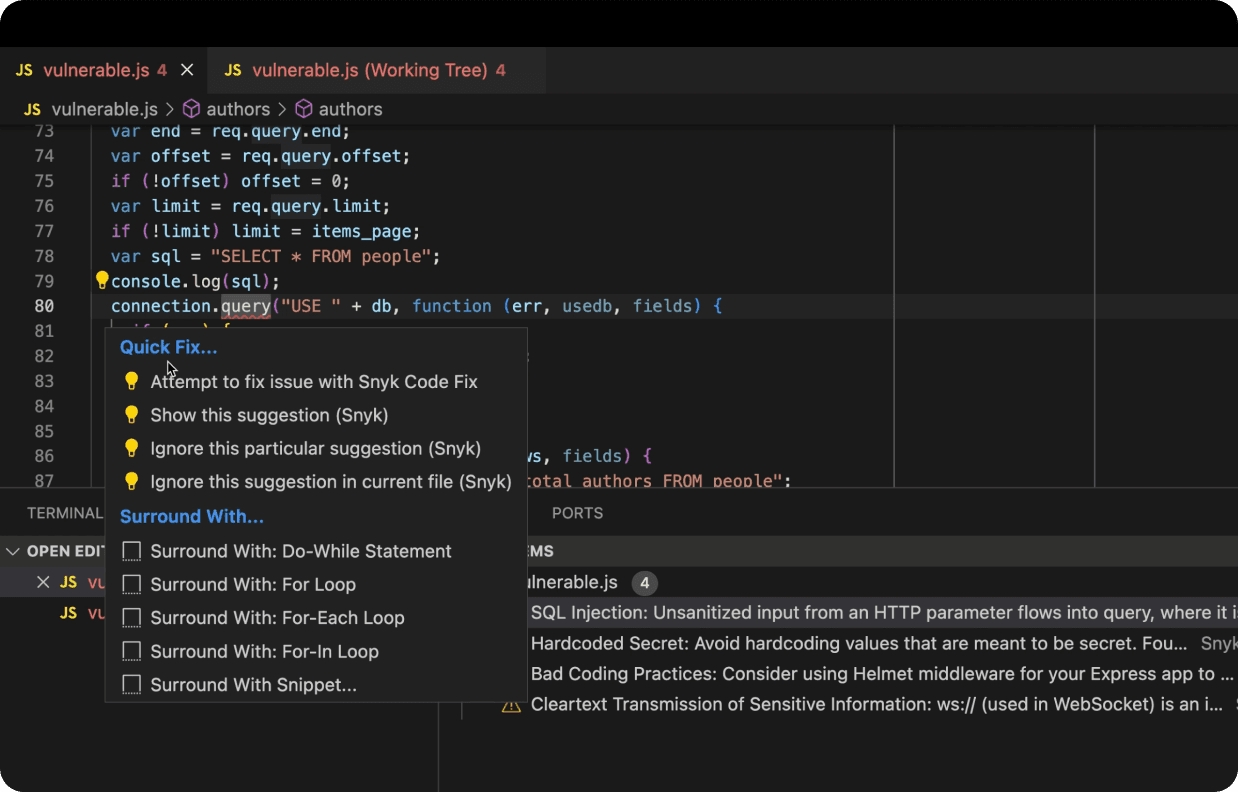
Since its launch in 2020, it’s grown into a team-oriented tool for speeding up coding across entire organizations 🚀
If you’d prefer to keep things simple or solo for now, there’s always good ol’ ChatGPT.
Your Next Assignment
If you’re the type of AI user who doesn’t want to peer behind the veil, you can go ahead and skip this week’s assignment – coding is an acquired taste 😅
But if you’re on a mission to learn, improve, or master coding…
Beginners, ask ChatGPT to write some Python for you.
Intermediate coders, test out code completion.
Serious coders, see if DeepCode, ChatGPT, or Open AI Codex catches something you didn’t 👀
Don’t forget to share your experience and tag us! We’re live on Facebook, Twitter, Instagram, LinkedIn, YouTube, and TikTok 📲

Stay cool out there, Puppies! We’ll be back next week with another take on AI tactics.
Cheers,
The AI Puppy
